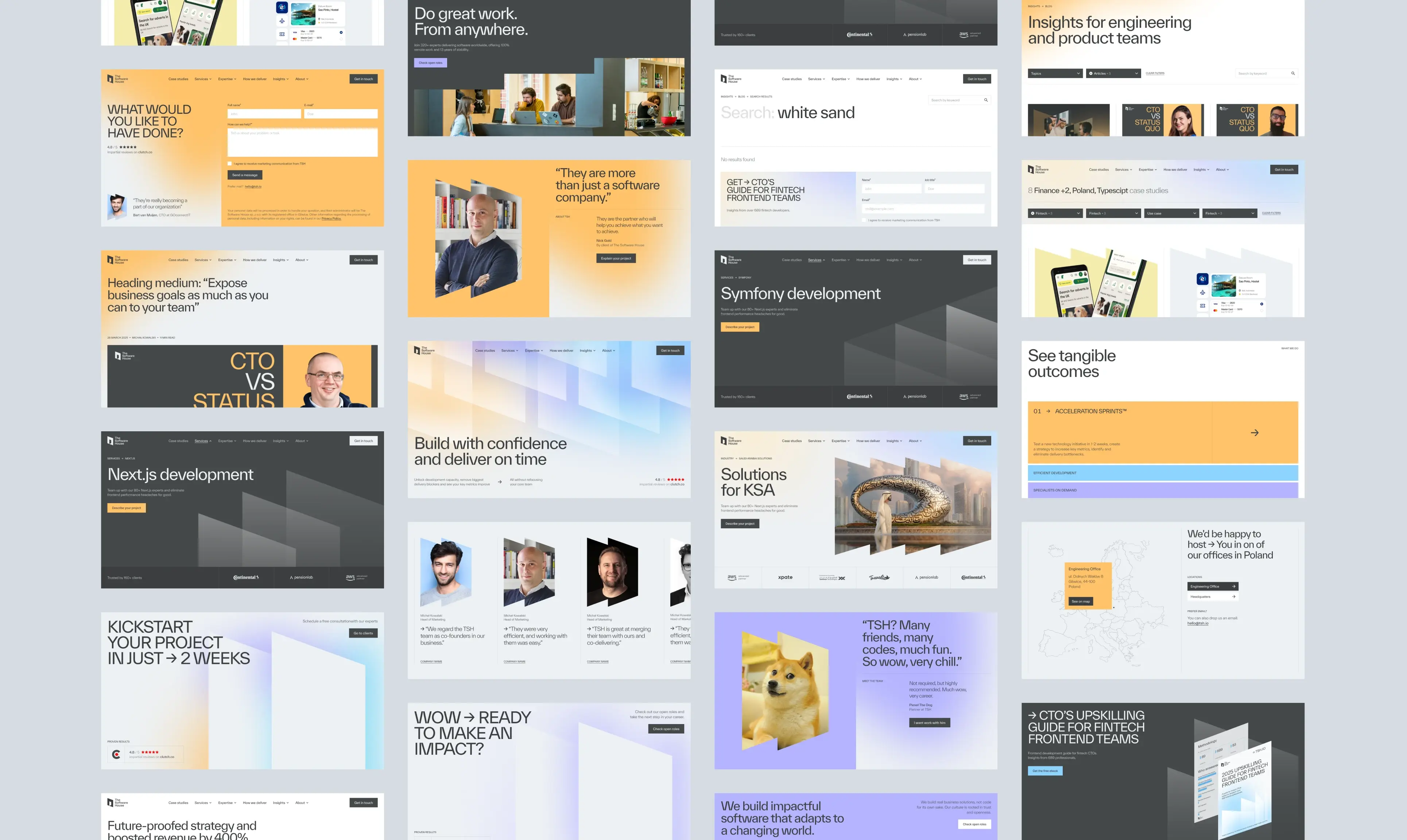In house building and digital product development, each critical phase has its parallels. Selecting a location is akin to understanding a product's purpose and user needs, both involving thorough research. Digital design drafts are similar to architects' plans, leading to prototype development, just like constructing a house model. Quality assurance in both fields ensures standards and user needs are met.
Just as final touches turn a house into a home, user feedback refines a digital product pre-launch. In both areas, personal touches are crucial: in homes through interior design and in digital products via a tailored design approach. The Design System plays a key role here, offering a reusable framework for digital products, akin to a blueprint in interior design.
What is the design system?
In digital development, a design system functions similarly to IKEA's furniture design philosophy. It includes a series of design principles, standards, and reusable elements, much like IKEA's interchangeable furniture components. These elements, from typography to interface buttons and icons, parallel IKEA's standardized parts.
The system blends coding guidelines and best practices, mirroring IKEA's streamlined assembly instructions. This approach reflects IKEA's commitment to versatile, user-friendly design. By emphasizing consistency and practicality, akin to IKEA's approach to easy assembly, a design system promotes collaborative teamwork and leads to the creation of digital products that are user-focused, scalable, and adaptable, embodying the simplicity and functionality characteristic of IKEA's home furnishing approach.


Successful design systems: the figures don't lie
Success in design systems is not a vague notion; it's quantifiable and backed by research, with a striking 96% of design systems being labeled as successful. These systems offer tangible solutions to the persistent challenges that often plague design teams within startups. They serve as the enabler of scalability, ensuring that as a company expands, it can maintain a consistent standard across all its products. They do away with inconsistencies that can erode a brand's identity and befuddle users.
Moreover, design systems bring about significant workflow enhancements by eliminating the need to create each component from scratch, enabling teams to prioritize what truly matters—the user experience. Notably, design systems elevate efficiency, facilitating quicker iterations and freeing up valuable time and resources for innovation.

What design systems and ikea have in common?
Reusable components of a design system
IKEA is renowned for its modular furniture approach, offering pieces that can be flexibly assembled to cater to different needs and spaces. This concept is mirrored in design systems, which utilize reusable components like buttons, forms, and navigation menus. Just as IKEA's furniture can be arranged in various configurations, these design elements can be combined in multiple ways to create diverse aspects of a digital product, embodying the same principle of versatility and adaptability.

How-to guide and standards
Guidelines and standards in a design system function much like the instruction manuals provided with IKEA furniture, offering clear, step-by-step instructions. They ensure that design elements are used and combined effectively, maintaining consistency across digital products just as IKEA's manuals guide users to correctly assemble their furniture.

Increased efficiency and productivity
A design system, much like IKEA's furniture design philosophy, prioritizes efficiency and scalability, facilitating a smoother and faster process in designing and developing digital products. This approach mirrors the ease of assembly and adaptability inherent in IKEA furniture, which is crafted to easily fit into diverse spaces and meet varying needs.

Standardized toolkit
Standardizing the assembly process, IKEA typically provides the essential tools or requires only basic tools for furniture construction. Similarly, in digital design and development, a set of standardized tools and technologies, such as design software and coding libraries, are integral to a design system, ensuring uniformity across teams.


Flexibility within structured framework
Providing a balance between uniformity and personalization, both IKEA furniture and design systems offer standardized frameworks that still accommodate customization. In the case of IKEA, this means the ability to rearrange or add components to furniture. At the same time, in design systems, it translates to the flexibility to tailor elements to suit the specific needs of various projects or features, all within an overarching, cohesive structure.

Consistency and coherence
In the world of IKEA furniture and design systems, there's a concerted effort to create a uniform aesthetic. IKEA's various furniture items are designed to be aesthetically compatible in different environments, paralleling how design systems work to ensure a coherent visual language, with matching colors, typography, and imagery, across all components of a brand or product.

Design system facts
Sparkbox experimented with the Carbon Design System, finding that using a design system reduced the time to develop a simple form page by 47%. This compared to 4.2 hours for manual coding versus 2 hours with the design system.
Similarly, Crédit Agricole reported a 30-35% reduction in tech costs due to their design system.
The Constellation design system by Lloyds Banking Group saves an average of £190,000 per project and, between June and December 2018, it saved the bank approximately £3.5 million across various projects.
Figma's team of 7 product designers, each with 20 hours of focused design time per week (140 hours), can increase their productivity by 34% using a relevant design system. This boost is equivalent to 212 design hours, similar to adding 3.5 designers to the team weekly. As Figma continues to expand and consistently apply its design system across more tasks, this efficiency gain is expected to grow.
As a member of Twitch’s design systems team said at SF Design Week, “The system [addresses] 80% of what design and development need so they can focus on the other 20%.”
According to Nathan Curtis, designing buttons with a team of a designer, engineer, and QA specialist at $100/hr for 200 hours costs $20,000 per set. In an enterprise with 50 teams, buttons alone cost $1 million, highlighting the need for a design system to standardize components and reduce costs.
On average, implementing a design system can accelerate development by about 37%, significantly saving time and money in project development and effectively demonstrating its value to tech and leadership teams.
Moreover, design systems bring about significant workflow enhancements by eliminating the need to create each component from scratch, enabling teams to prioritize what truly matters—the user experience. Notably, design systems elevate efficiency, facilitating quicker iterations and freeing up valuable time and resources for innovation.
Conclusion: the ikea effect on business with design systems
Adopting design systems has transformed business operations, akin to building IKEA furniture. These systems boost efficiency, enhance user engagement, and foster innovation, similar to the satisfaction of completing an IKEA project. They streamline workflows, enable rapid adaptation, and produce customer-aligned products, much like assembling furniture with clear instructions. This approach gives businesses a competitive edge, positioning them for leadership and growth in an innovation-driven market.
Design systems in business mirror assembling IKEA furniture, enhancing efficiency, user engagement, and innovation. They streamline processes, allow quick adaptation, and deliver customer-centric products, providing a competitive edge in a dynamic, innovation-driven market.
Design systems streamline processes, enable quick adaptation, and deliver products that resonate with customers, akin to assembling furniture with clear instructions. Embracing design systems provides a competitive edge in today's dynamic business environment, positioning organizations for leadership and growth in an innovation-driven market.
Contact us to create a customized design system for your organization. At Widelab, we've witnessed how these systems, much like IKEA furniture, can revolutionize business operations and lead to success.







